
The best summer skin care routine, according to dermatologists
Some skin care practices are standard, no matter what the season or weather. But dermatologists often make special changes to their routine once warmer weather rolls around. Here’s what they do and why you might want to consider making these changes to your routine, too.
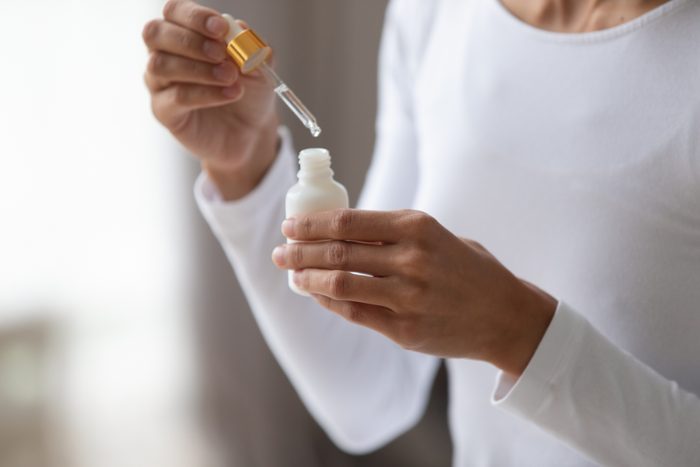
Remove dull, winter skin
First things first: Get rid of all traces of winter to help your clear, healthy skin shine through! Jessica Wu, MD, board-certified dermatologist applies Vita-Boost Vitamin Infusion Serum in a thin layer to her face and neck to revive her complexion and brighten dull patches left over from the winter. “This serum contains 20 percent vitamin C, the highest concentration that’s found in skin care products on the market today,” she says. Don’t do this right before sun exposure, as exfoliation makes the skin more sensitive.

Get rid of oil and bacteria
To remove oil and grime that might be on your skin, Wu recommends daily cleansing with Foaming Joy! Purifying Facial Cleanser, which contains hydrating and purifying ingredients to cleanse without stripping skin. David Lortscher, MD, a licensed dermatologist and founder of Curology, suggests swapping out creamier cleansers for gel-based products, such as Avene Cleanance Cleaning Gel or Boscia Purifying Cleansing Gel. “If you have oily skin in the summer, opt for a foaming cleanser such as CeraVe Foaming Cleanser,” he says.
For a finishing touch to your makeup, Elizabeth Tanzi, MD, recommends Colorscience SPF powder. Dr. Tanzi, who is founder and director of Capital Laser & Skin Care and assistant clinical professor, Department of Dermatology at the George Washington University Medical Center, admits to having one in every bag she owns so she’s never caught outside with it. “It’s amazing because it absorbs excess oil and goes on like a pressed powder, so it works beautifully over makeup and provides excellent sun protection,” she says.
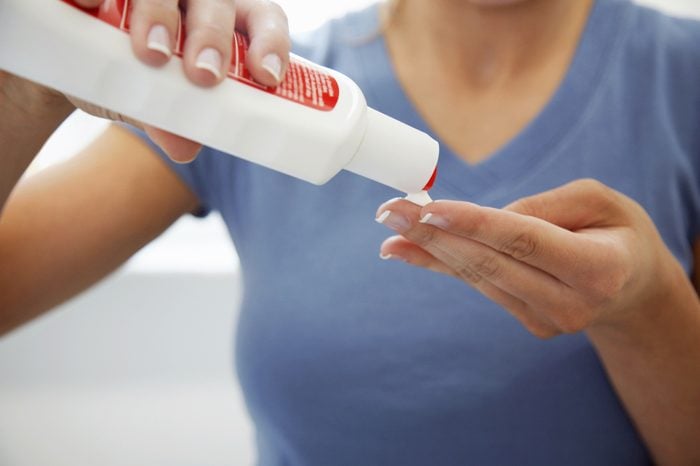
Apply sunscreen before going outdoors
No summer skin care routine can skip SPF. “I recommend using at least SPF 30, which blocks out 97 percent of the UVB (burning) rays,” says Dr. Wu. “If you go in the water or exercise outdoors and work up a sweat, look for water-resistant sunscreens that won’t wash off. It’s also a good idea to reapply every three hours, since it wears off or rubs off, especially if you have oily skin or touch your face frequently.” This 50 Fierce Broad Spectrum SPF 50 Moisturizer & Sunscreen not only protects you from sunburn, it also protects against the UVA (aging) rays that break down collagen and lead to premature aging, according to Dr. Wu. A great SPF tip comes from Francesca Fusco, MD, of Wexler Dermatology: Keep trial/sample sizes of SPF everywhere—your bag, your desk, your car, and your pockets.
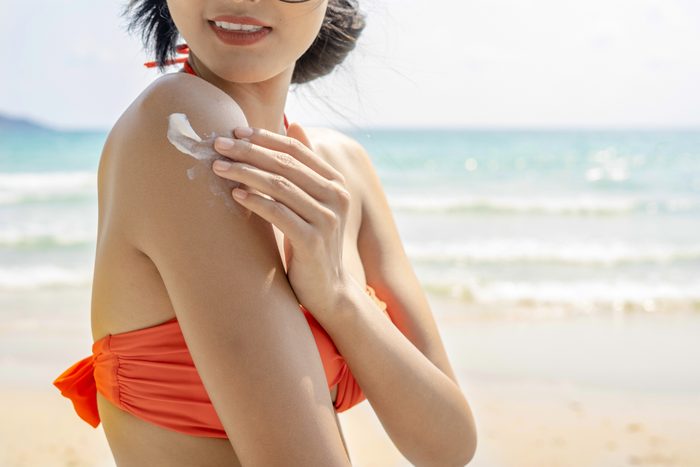
Don’t restrict sunscreen to your face
Sunscreen is for any part of your body that’s exposed to the sun, not just your face. Don’t forget the back of your neck, the top of your ears, and the backs of your hands. “It’s especially important to use sunscreen if you’re using a retinoid or vitamin C product which can make your skin more sun sensitive,” says Dr. Wu. Board-certified dermatologist Cheryl Karcher, MD, applies sunscreen to her hands and arms in summer, which she doesn’t always do in winter. “If I’m wearing a skirt or shorts, I apply sunscreen to my legs as well,” she says. “I prefer the thinner chemical sunscreens for daily use as the zinc and titanium oxide sunscreens tend to be a little thick.” One of her personal favorites is Elta MD Clear SPF 46.
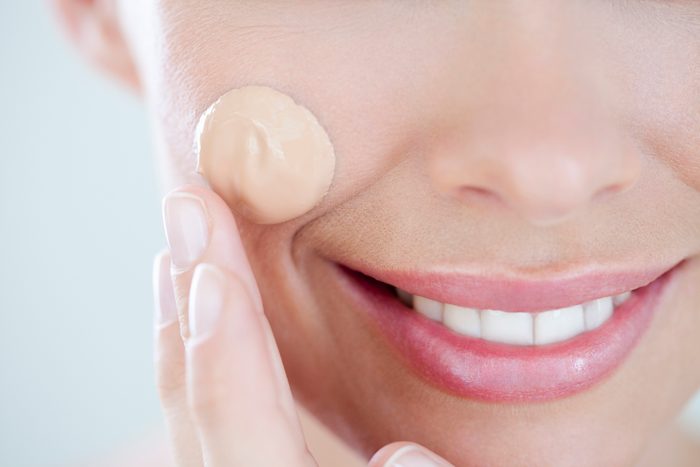
Go for multi-purpose skin protection
If you don’t want to wear heavy makeup in summer but still want enough cover, the best skin care products are multifunctional, like Alastin HydraTint Pro Mineral Broad Spectrum Sunscreen SPF 36. “It’s an all-in-one product that combines sunscreen, environmental protection, moisturizer, and foundation in a beautiful formulation and convenient pump,” says Maryland dermatologist Roberta F. Palestine, MD. “It goes on easily, feels lightweight, looks great, and is easy to remove.” Anna Avaliani, MD, a cosmetic and laser skin care expert, recommends SkinCeuticals Physical Fusion Tinted SPF 50. “It’s lightweight, blends easily, does not turn my skin yellow and, because it’s tinted, I don’t feel the need to use much makeup at all,” she says.
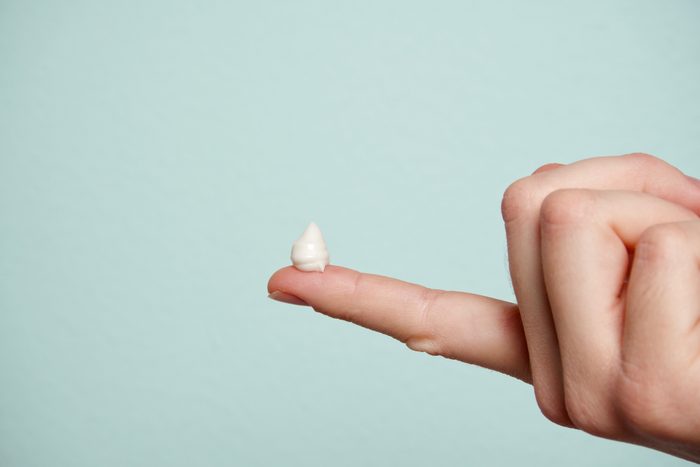
Go light on moisturizer
If you’ve been slapping on moisturizer all winter, it might be time to ease off. “Water has a tendency to evaporate from the skin into the environment, especially in dry cold air. For this reason, skin requires more help during the cold winter months,” explains Fayne L. Frey, MD, the founder of FryFace. “In general, moisturizers that are thicker, ointment based, provide a better barrier to water loss than thin lotions and creams. Therefore, the skin benefits from thicker, greasier ointments during the winter months, and more frequent application of moisturizers as well. During summer months, when the air is warm and humid, there is less of a tendency for water to evaporate and less moisturization is required. As a matter of fact, when ambient humidity is high enough, the skin can actually pull water out of the environment.” Tanzi agrees that lighter moisturizers are best for summer skin care since the skin produces more of its own natural oils. (Find out if you should be keeping your skincare products in a beauty fridge during the summer heat.)
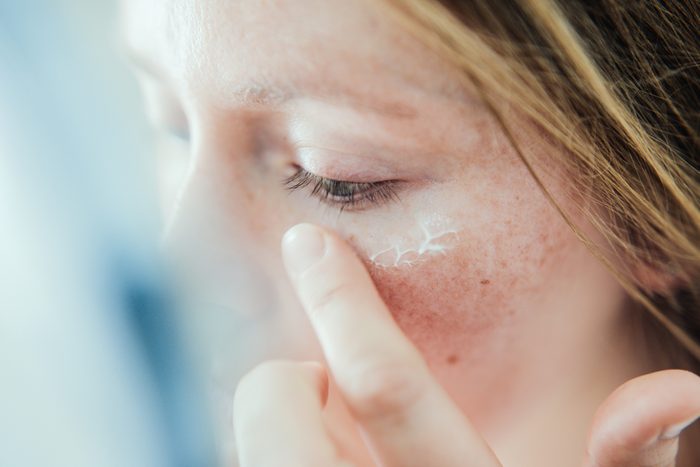
Apply topical antioxidants
Sun exposure triggers premature aging and increases the risk of skin cancer, making topical antioxidants a must-have for many dermatologists. Debbie Palmer, MD, medical director, Dermatology Associates of New York, author of Beyond Beauty, and founder of Replere Skin Care, stresses that topical antioxidants are important for healthy, youthful-looking skin. “They neutralize destructive free radicals (by donating an electron to the unstable free radical), which develop from things like car exhaust and daily pollution, ultraviolet rays from the sun, emotional and physical stress, and processed foods,” she explains. “Our bodies contain antioxidants but our systems can become overwhelmed in a modern society filled with free radical triggers. Research has shown that topical use of antioxidants can provide additional protection from free radical damage; slow the visible signs of skin aging; be photo-protective, anti-bacterial, anti-viral and anti-carcinogenic; and improve the appearance of fine lines, wrinkles, facial redness, and hyperpigmentation or brown spots.”

Up your water intake
Before you even think about what you’re putting on your skin, you should be thinking about what you’re putting into it, says celebrity dermatologist Harold Lancer, MD. “When it comes to properly transitioning one’s skin care routine to adapt to the warmer months, first and most importantly, everyone should be drinking more water,” he says. “Staying hydrated is essential for beautiful skin and good health. Being well-hydrated stabilizes the skin barrier, which moisturizes your skin and provides the proper medium for cell turnover and collagen production.”

Wear sun-protective clothing
There’s no bigger advocate of sun protective clothing and hats for the summer months than board-certified dermatologist Melanie A. Warycha, MD. “I cover my son from head to toe!” she says. “It’s easy, fast, and takes out the necessity of having to reapply sunscreen to the body. Coolibar is a great brand which sells fashionable sun protective clothing and hats for the entire family.” Allison Arthur, MD, of Sand Lake Dermatology Center in Orlando, Florida, agrees that sun-protective clothing is the way to go. “A normal T-shirt provides the equivalent of an SPF 4-6, but most sun protective clothes are rated with an ultraviolet protection factor (UPF) of 50+,” Dr. Arthur explains. “For running errands, I will often throw on a UPF cardigan or dress to cover my arms. When I go to the beach, I am covered head to toe with a broad-brimmed hat, UPF swim shirt, and swim tights that go down to my ankles. For sports like kayaking I add gloves and a neck gaiter that can be pulled up to cover the lower face.”
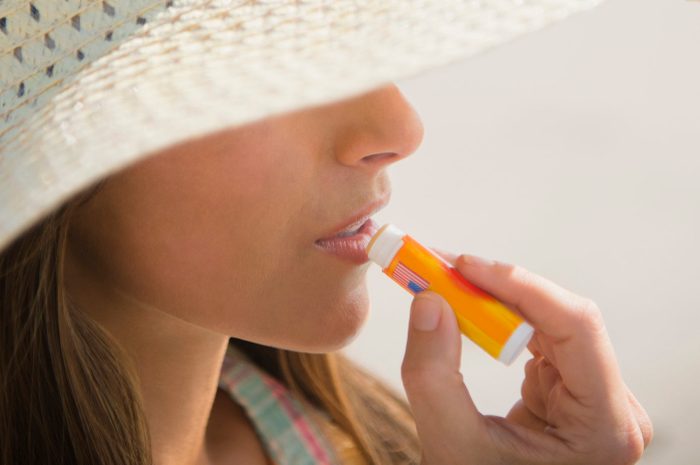
Don’t forget your lips
Don’t neglect the sensitive skin on your lips. “The bottom lip is a highly sun-exposed area,” says board-certified dermatologist George Skandamis, MD. He recommends EltaMD UV Lip Balm Broad-Spectrum SPF 36, an all-in-one, long-lasting, and creamy lip treatment that moisturizes and protects with SPF 31 broad-spectrum UVA/UVB sunscreen. Dr. Arthur recommends a Colorescience product called Sunforgettable Lip Shine SPF 35, a lip gloss made with zinc for sun protection.
Next, watch out for these signs that you need to see a dermatologist STAT.
